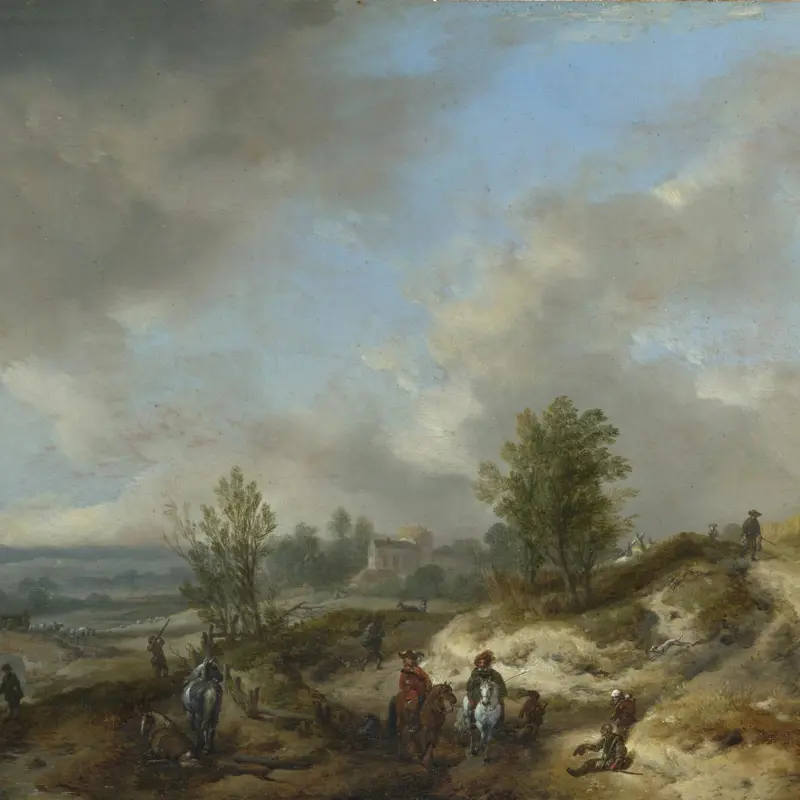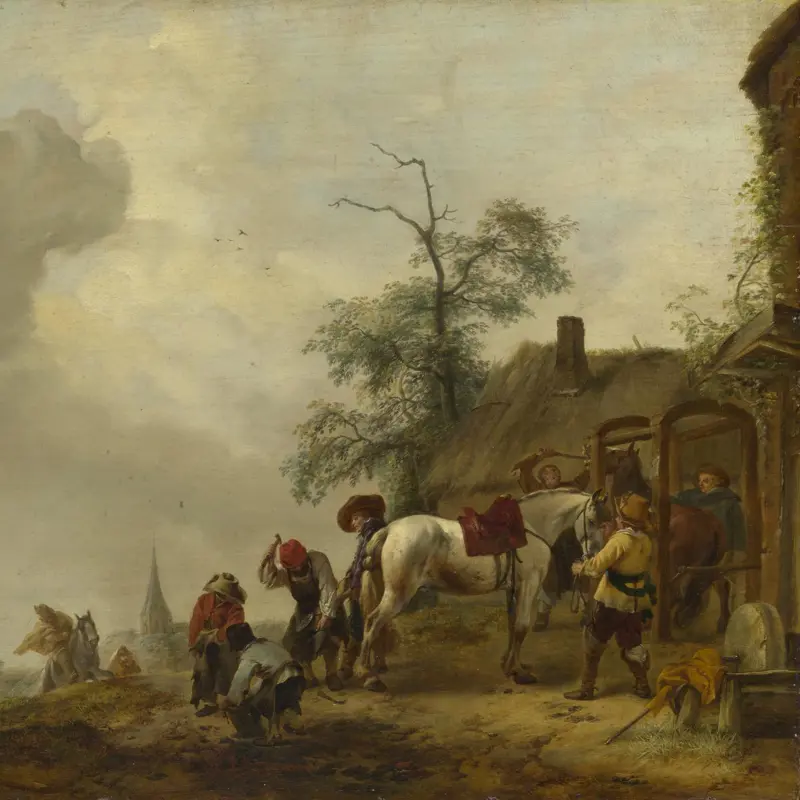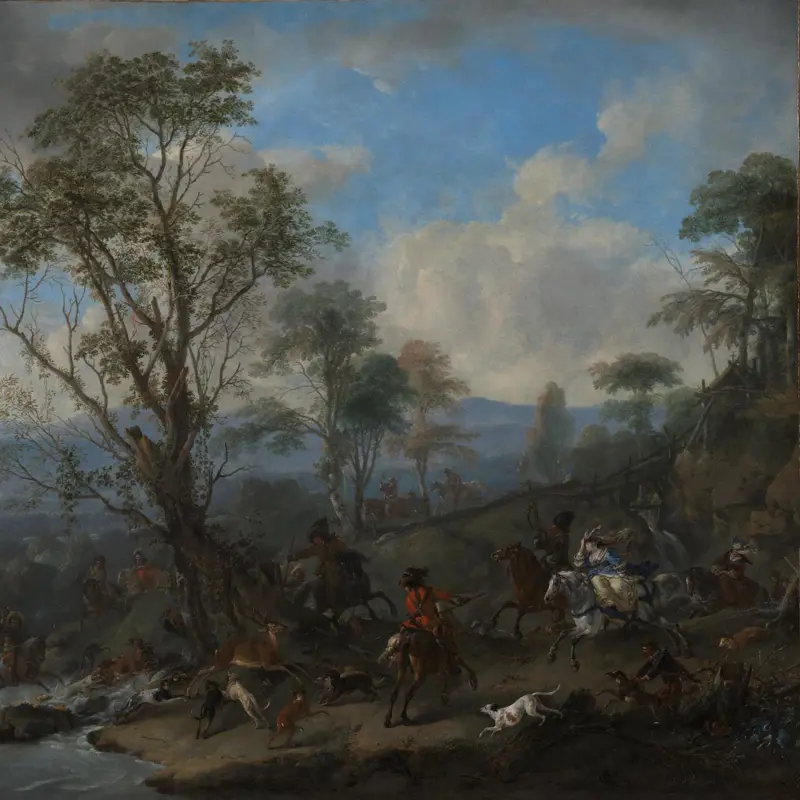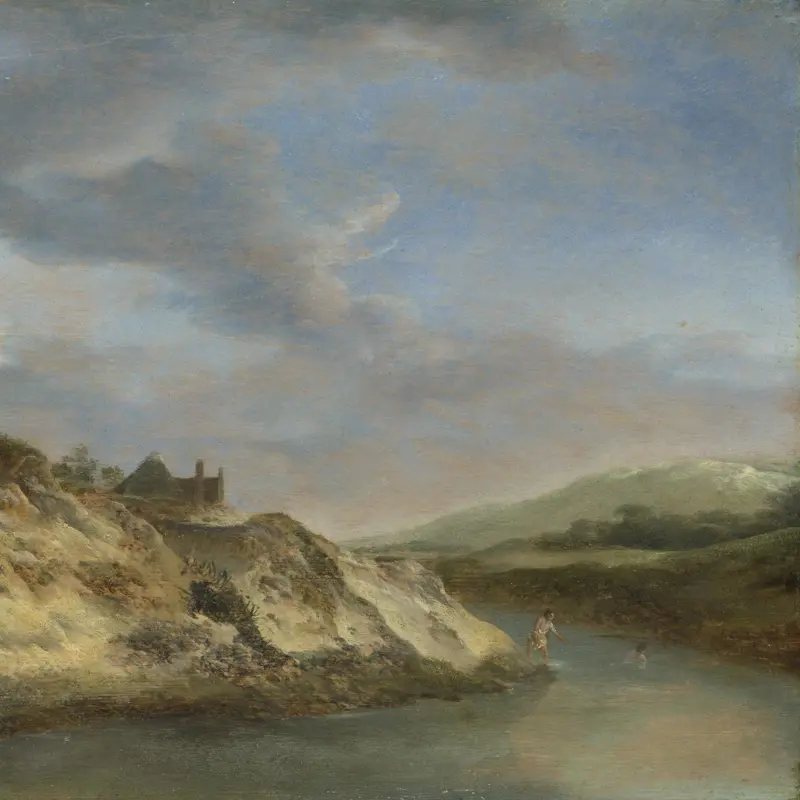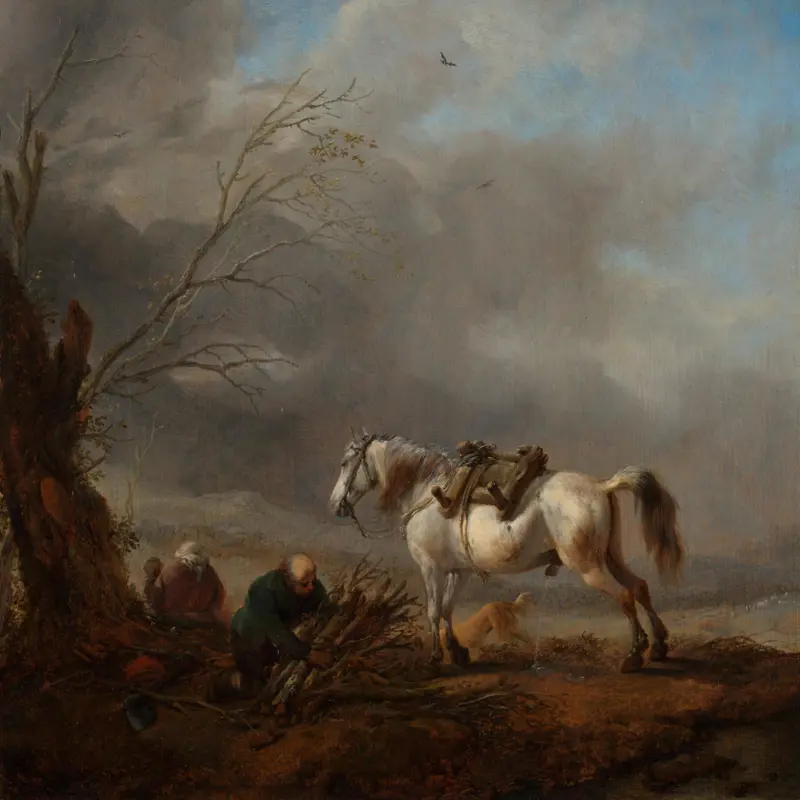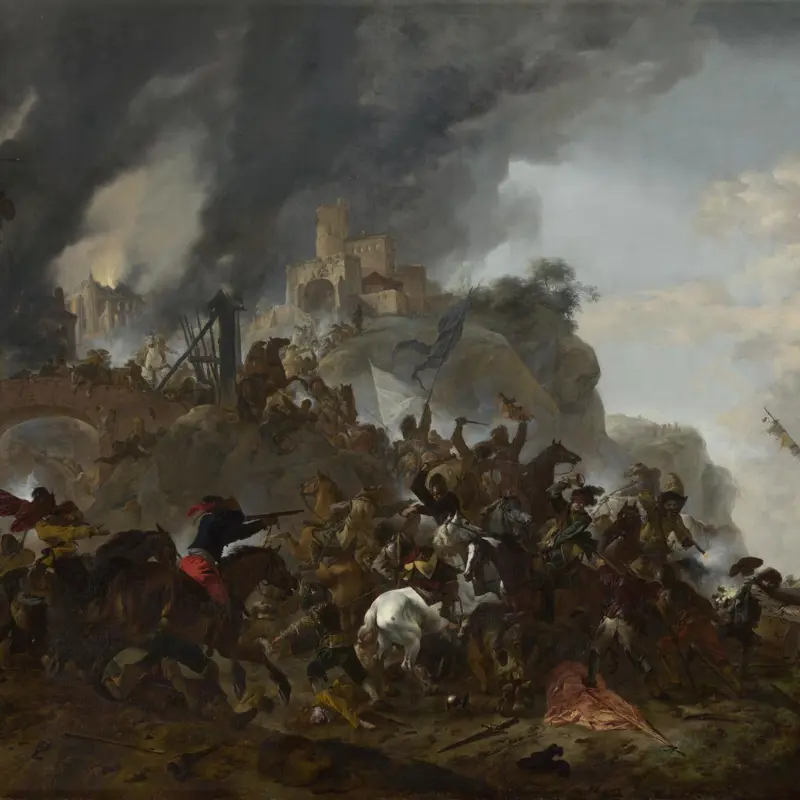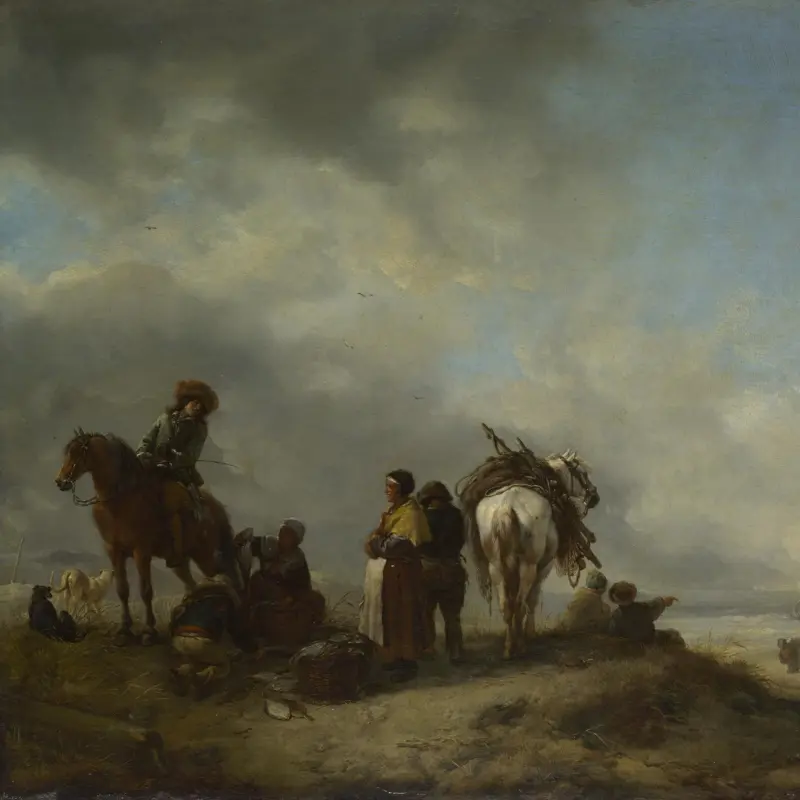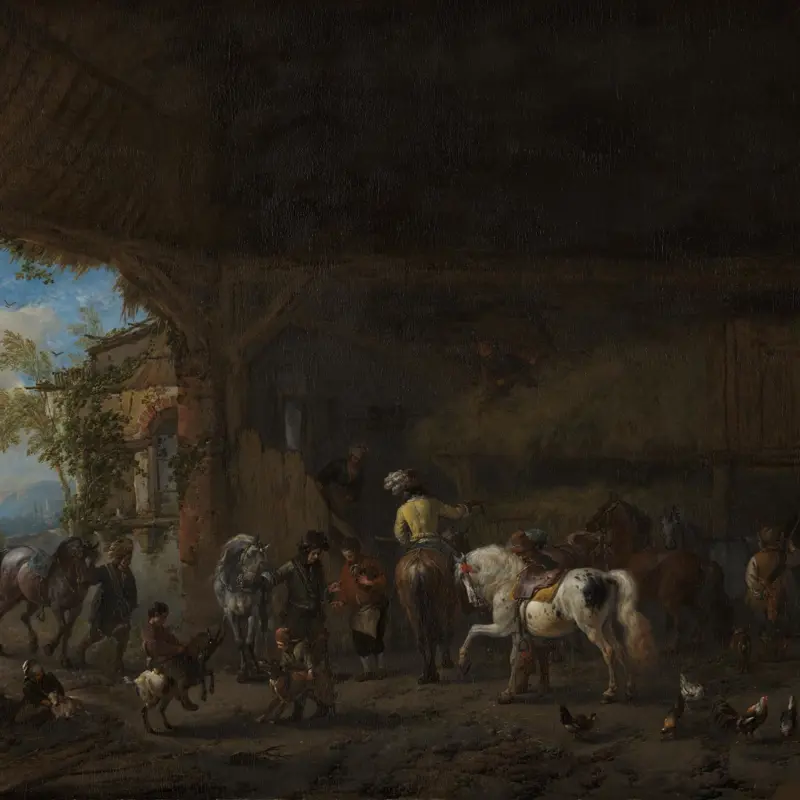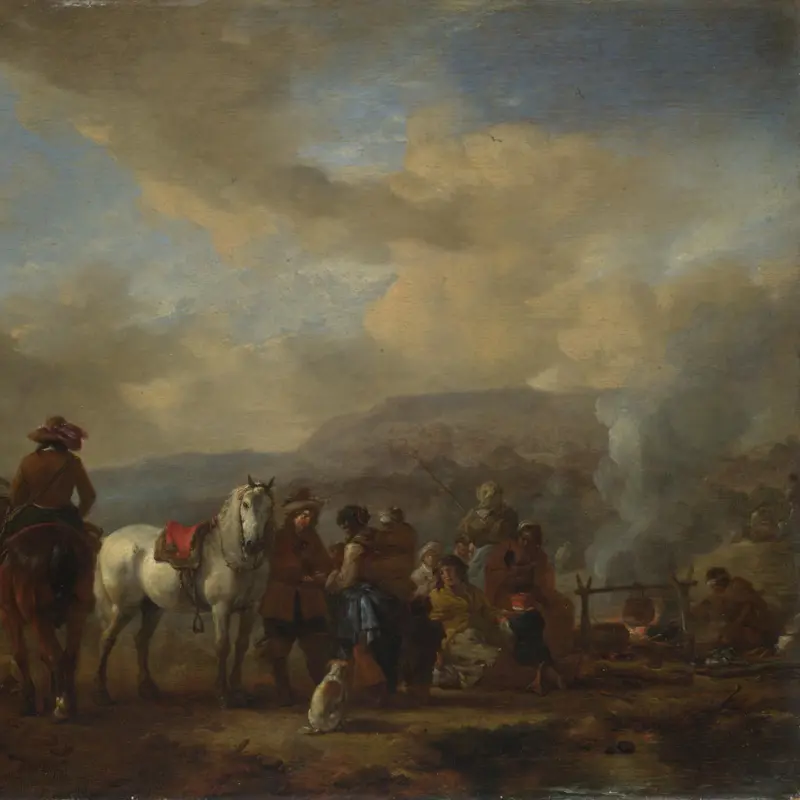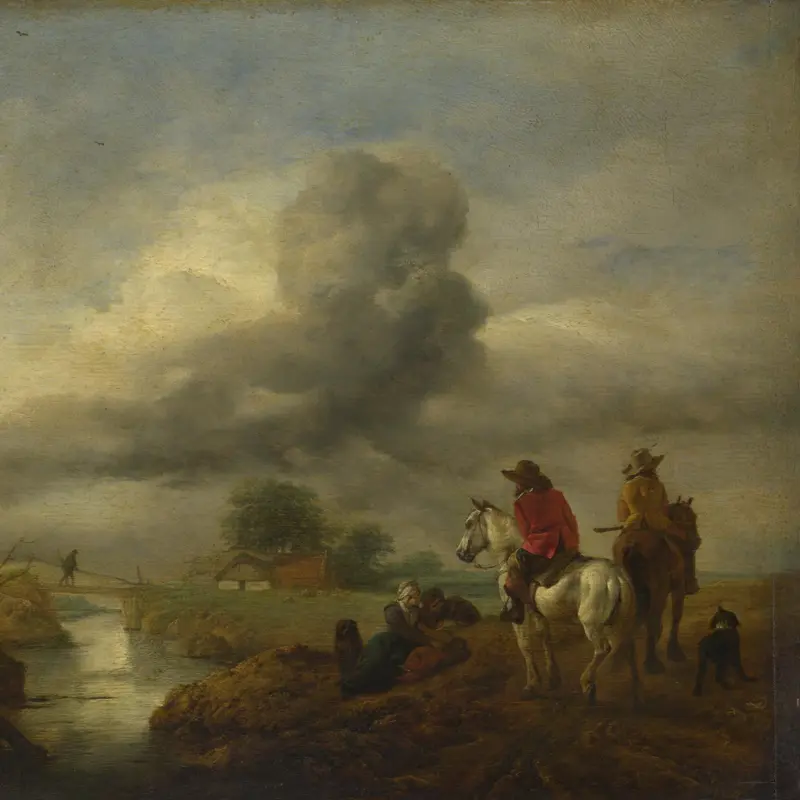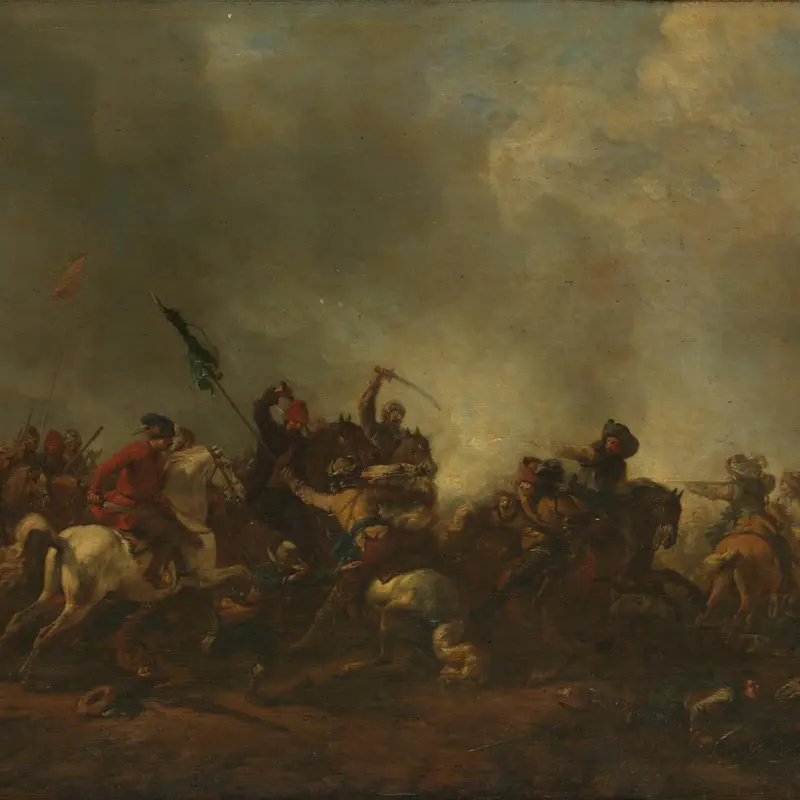Philips Wouwerman, 'Cavalrymen halted at a Sutler's Booth', probably 1650s
About the work
Overview
A large tent or booth has been set up on top of a hill above a military camp, next to a blasted tree. They stand upright against a big, luminous sky, together filling nearly half the picture.
Dramatic though this backdrop is, it’s the cavalrymen gathered in the foreground whose antics are the main entertainment for the viewer. They have been attracted up from the camp by the tent, which has been pitched by a ’sutler', a man – or very often a woman – who made their living by following an army on the march and selling drink and other provisions to the troops.
Inevitably, it was a popular place for off-duty soldiers to relax and enjoy themselves. Here, a cavalryman raises his empty tankard, the officer in the centre attempts a seduction and a third horseman celebrates his own arrival with a blast on his bugle.
Key facts
Details
- Full title
- Cavalrymen halted at a Sutler's Booth
- Artist
- Philips Wouwerman
- Artist dates
- 1619 - 1668
- Date made
- probably 1650s
- Medium and support
- oil on wood
- Dimensions
- 51.5 × 41.7 cm
- Inscription summary
- Signed
- Acquisition credit
- Bought with the Peel Collection, 1871
- Inventory number
- NG878
- Location
- Not on display
- Collection
- Main Collection
- Previous owners
Provenance
Additional information
Text extracted from the ‘Provenance’ section of the catalogue entry in Neil MacLaren, revised and expanded by Christopher Brown, ‘National Gallery Catalogues: The Dutch School: 1600–1900’, London 1991; for further information, see the full catalogue entry.
Bibliography
-
1829
J. Smith, A Catalogue Raisonné of the Works of the Most Eminent Dutch, Flemish, and French Painters: In Which is Included a Short Biographical Notice of the Artists, with a Copious Description of Their Principal Pictures […], 9 vols, London 1829-1842
-
1844A.M. Jameson, Companion to the Most Celebrated Private Galleries of Art in London: Containing Accurate Catalogues, Arranged Alphabetically, for Immediate Reference, Each Preceded by an Historical & Critical Introduction […], London 1844
-
1854G.F. Waagen, Treasures of Art in Great Britain: Being and Account of the Chief Collections of Paintings, Drawings, Sculptures, Illuminated Mss. […], vol. 2, trans. E. Eastlake, London 1854
-
1907C. Hofstede de Groot, Catalogue Raisonné of the Works of the Most Eminent Dutch Painters of the Seventeenth Century, 10 vols, London 1907
-
1907C. Hofstede de Groot, Catalogue Raisonné of the Works of the Most Eminent Dutch Painters of the Seventeenth Century, 10 vols, London 1907
-
1960Maclaren, Neil, National Gallery Catalogues: The Dutch School, 2 vols, London 1960
-
1991Maclaren, Neil, revised by Christopher Brown, National Gallery Catalogues: The Dutch School, 1600-1900, 2nd edn (revised and expanded), 2 vols, London 1991
-
2001
C. Baker and T. Henry, The National Gallery: Complete Illustrated Catalogue, London 2001
About this record
If you know more about this work or have spotted an error, please contact us. Please note that exhibition histories are listed from 2009 onwards. Bibliographies may not be complete; more comprehensive information is available in the National Gallery Library.

